How to Draft Fiber for a More Consistent Yarn
This post may contain affiliate links, meaning that I may earn a small commission if you make a purchase. See our disclosure policy for more information.
If you are learning to spin your own yarn, I am willing to bet that you have gotten frustrated trying to obtain a consistent thickness. There are various factors at play when achieving a consistent handspun yarn, which we will discuss today.
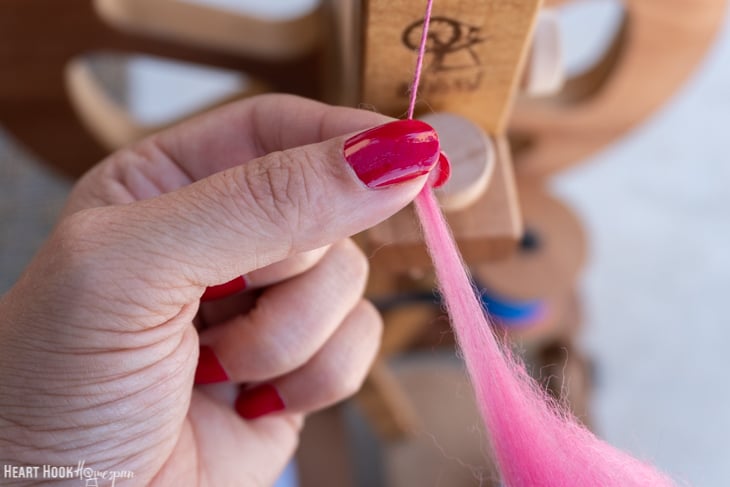
Drafting Fiber for a More Consistent Yarn
Drafting refers to the pulling apart of fibers so that you can add air and twist, ultimately turning the fiber into yarn. How thick or thin you draft your fiber will determine the weight (fingering/Sport/DK/Worsted) of your single bobbin. How you ply your singles will also effect the finished weight, and gaining consistency in this takes nothing but practice and time. These tips for consistent drafting are sure to help!
1. All Thumbs
Thumbs play a much more important role in consistent spinning than one might think. It is imperative to stop the twist from getting past your thumb and into the fiber source. If this happens, you get a big, twisted, mess that you must then untwist. If this happens, untwist the fiber with your fingers, and pinch again. Note that a death grip is not necessary, just enough to keep the twist from getting past it.
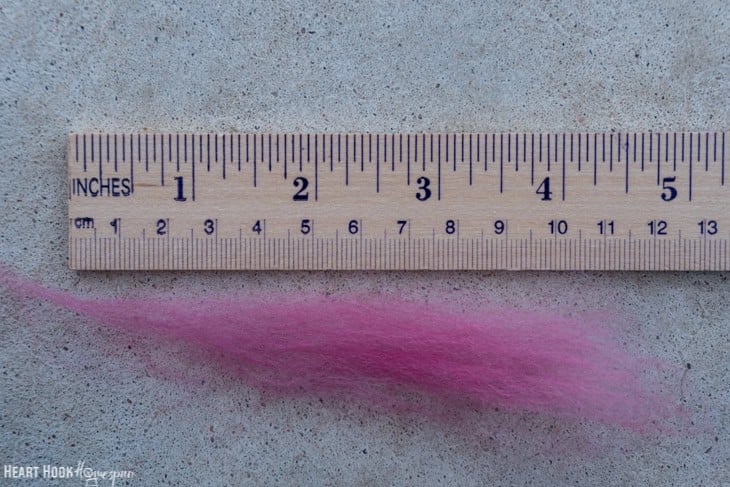
2. Staple length
First and foremost, find the staple length of your fiber, and then divide that number by two. Why, you ask? Because by knowing that my staple length here is between 4 – 5″, I know that if I draft half of that length, I should – theoretically – never get just one end of the fibers (causing a thin spot), or a huge clump in the middle (causing a thick spot known as a slub, see below), meaning that I should always maintain a consistent thickness of fibers in my drafting zone.
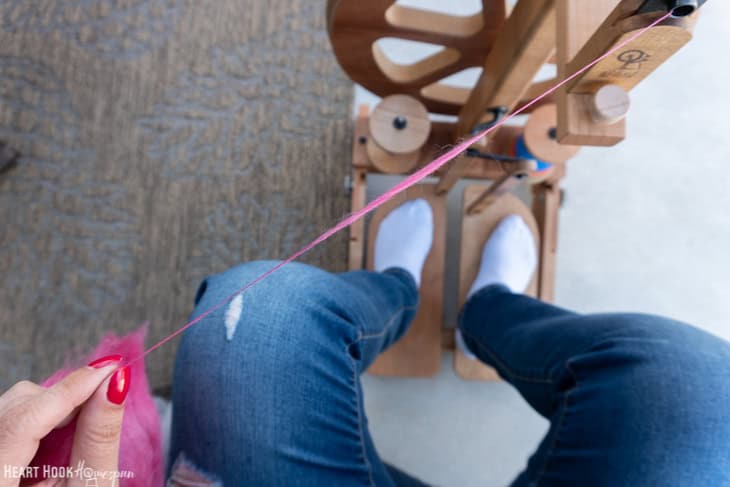
Related: How to Fix a Slub
3. Know your drafting triangle
The drafting triangle refers to the literal shape at the end of the fiber as you draft from it. It will form a triangle as the fibers are gently pulled apart. Try to always grasp the fiber from the drafting triangle in the same spot (meaning how far down the triangle you start to pull), as this helps with consistency.
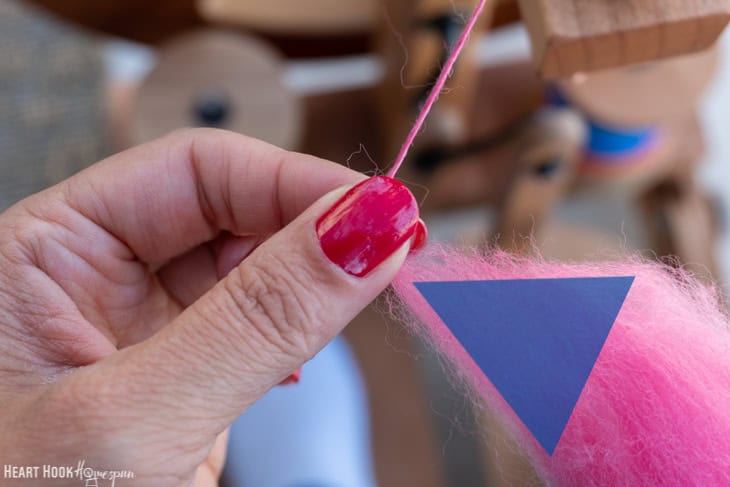
The farther down on the triangle you grab the fiber, the thicker your yarn will be.
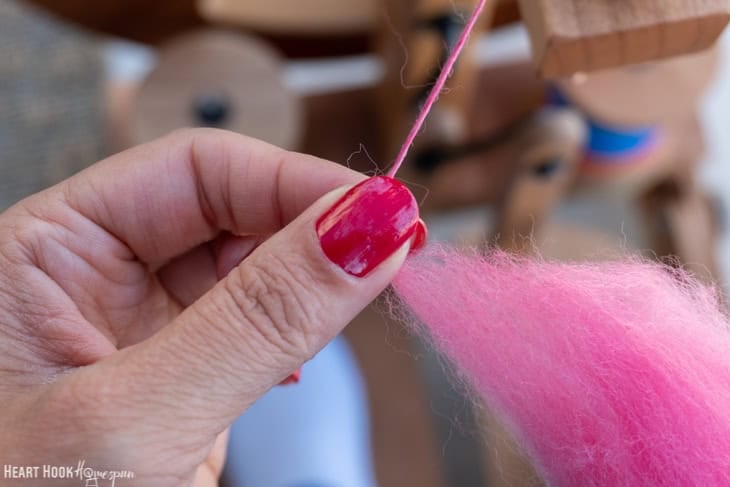
Wanna save this for later?
This takes nothing but practice, and helps to ensure that you are always starting to draft that section using the same amount of fiber.
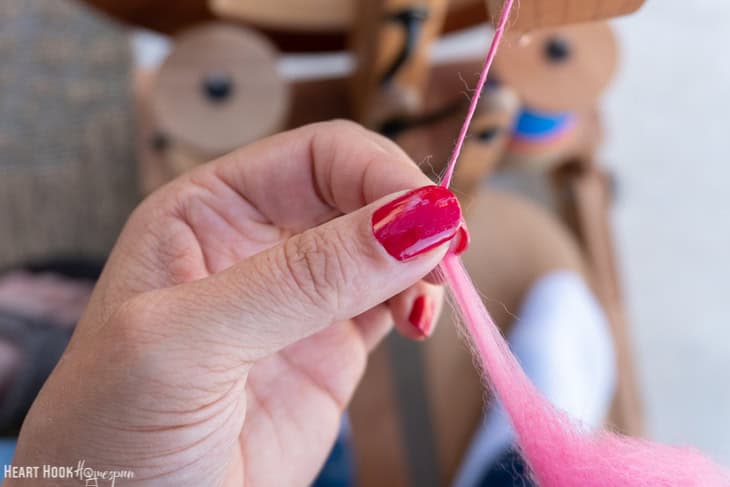
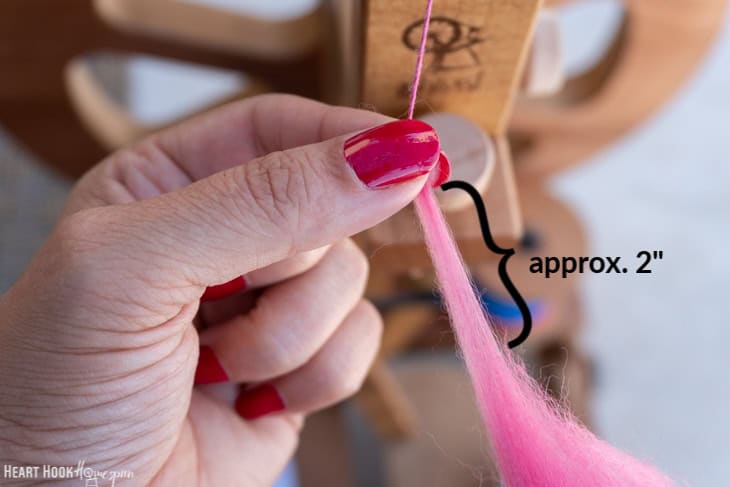
Remember the staple length tip above?
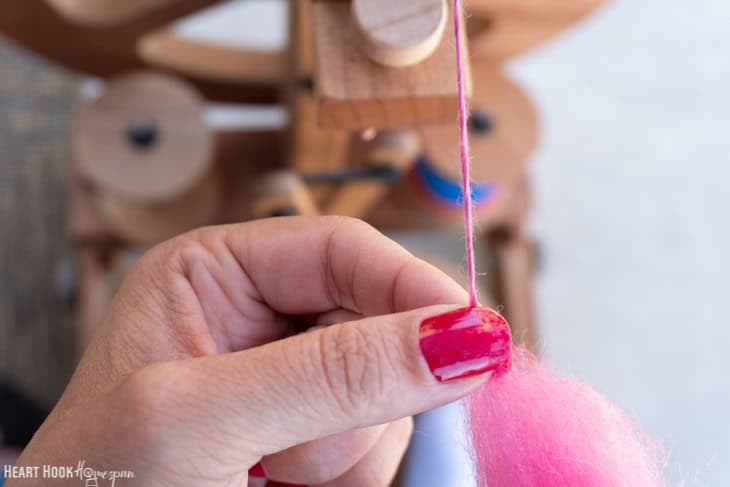
I have moved my thumb down, allowing the built up twist to travel down the drafted fiber. Now I am ready to grasp the fiber again – from the same position on the drafting triangle – from which I will pull approximately 2″.
It is also important to note that the twist will always gravitate to the thinnest spot of your fiber. If the yarn gets too thin and has too much twist in it, it can snap. If you find that you have a thin spot, introduce more fiber to that section, and continue spinning as normal.
I hope these tips to achieving a more consistent yarn are helpful to you!
How to Fix a Slub in Handspun Yarn


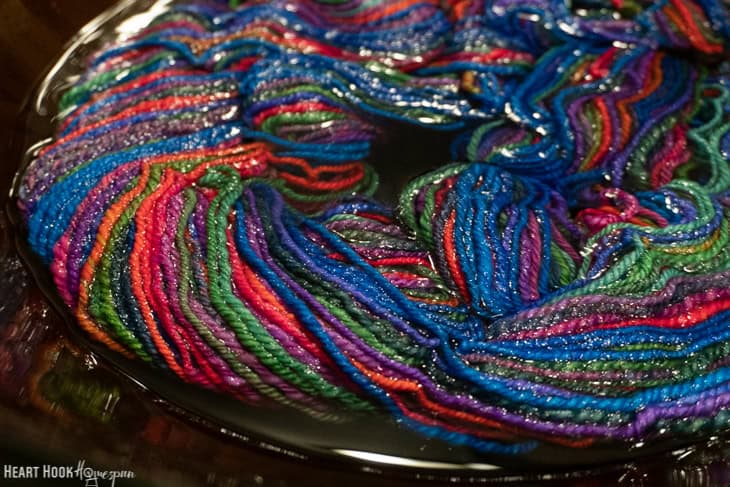
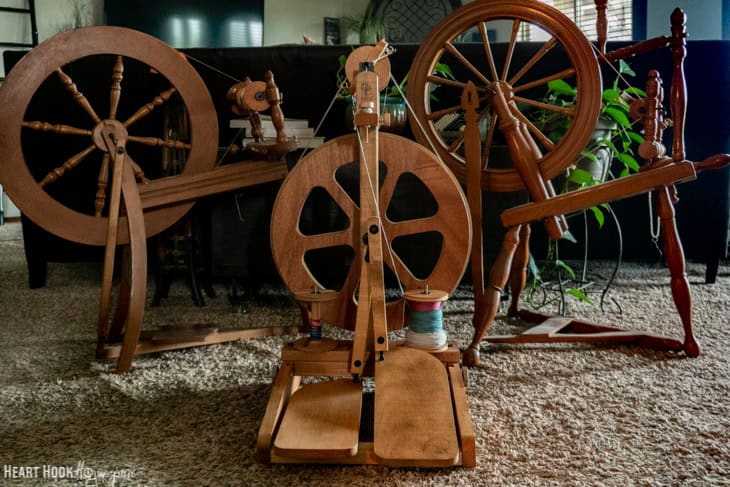
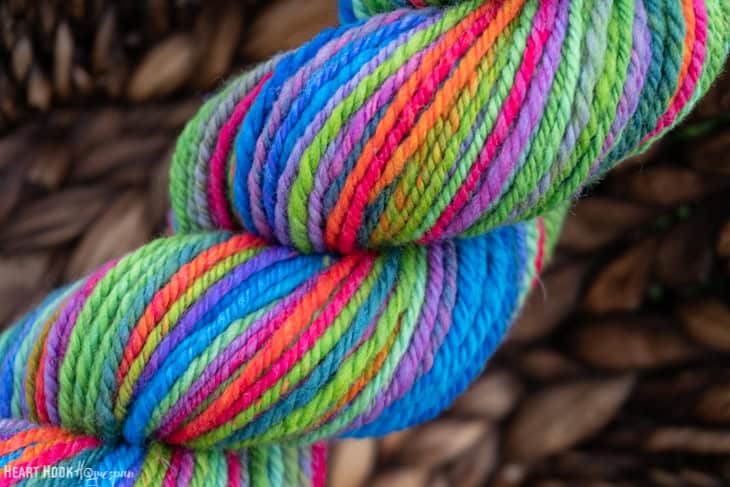
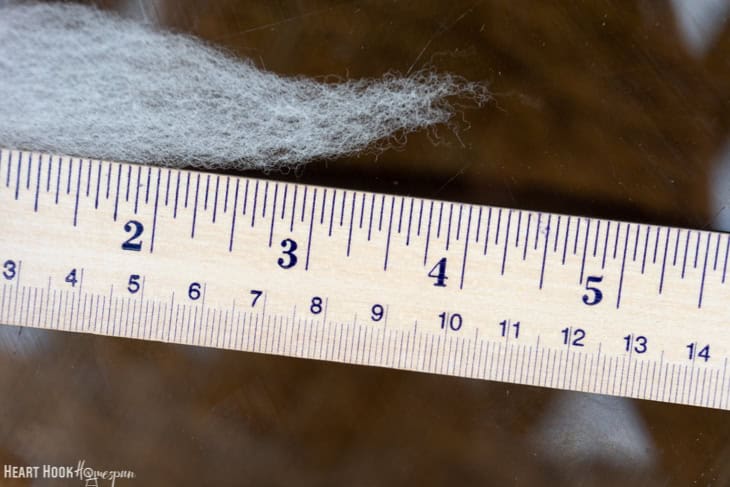
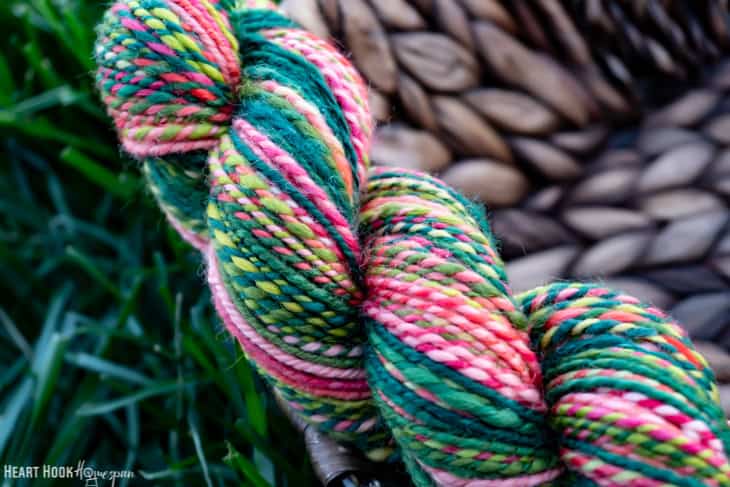
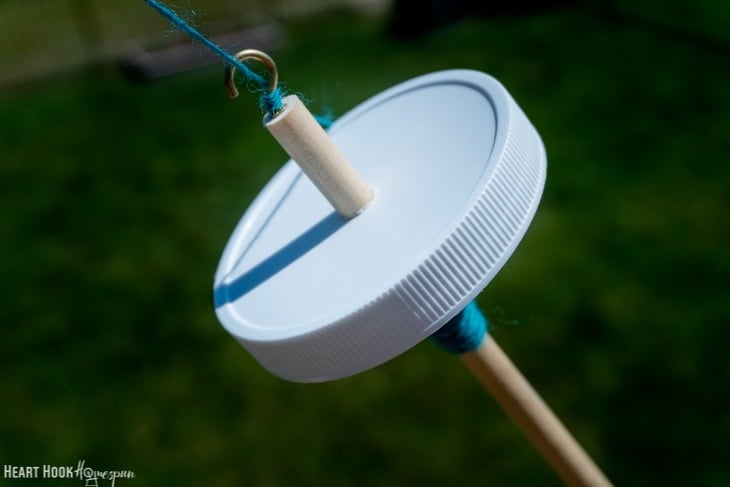
4 Comments